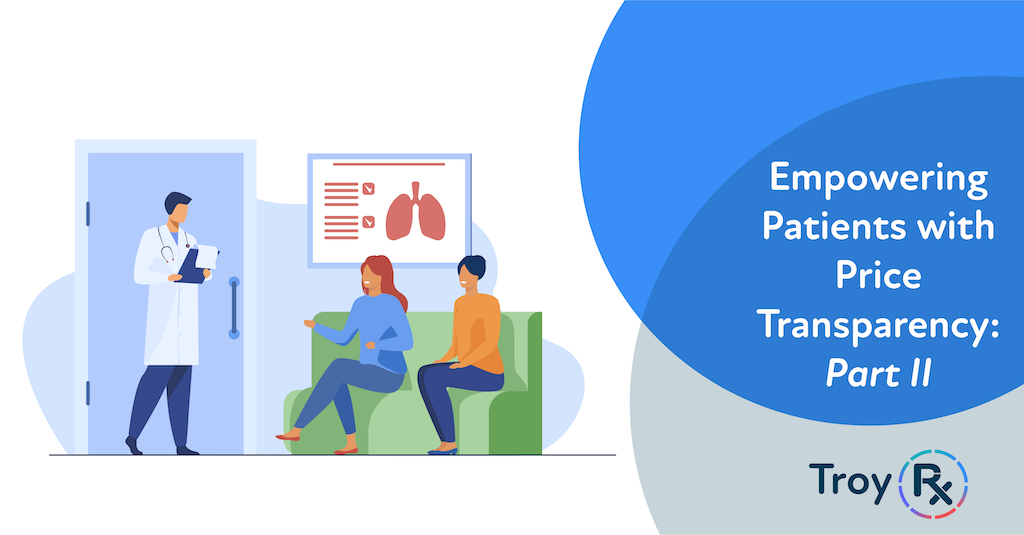Price Transparency for All – Part 2

Digital and paper payments platform for QuickBooks users
Easily print secure, on-demand MICR checks at home or in office
Ideal for high-volumes production check printing environments
Easily print secure, on-demand MICR checks on the go, from anywhere

A new mother anxiously waits for the first cries of her baby immediately after giving birth. Joy and fear overwhelm a father holding his child for the first time. The first introductions to grandparents, aunts and uncles are special moments that produce happy tears. Just as memorable for a parent: their first time seeing overwhelming medical bills associated with the delivery of their family’s newest addition.
Medical bills have their own due date, and the amount can be unexpected. For example, a caesarean section mentioned in a 2021 Wall Street Journal report cost a woman $6,241 at a California hospital. However, the exact same procedure could cost another woman as much as $60,584 at the same hospital. What could justify increasing the cost for the same procedure by that much?

Niall Brennan, chief executive of the Health Care Cost Institute, explained in an interview with the Wall Street Journal, “[The Health Care Cost Institute] is shining a light on the insanity of U.S. healthcare pricing,” going on to say, “[Pricing] is at the center of the affordability crisis in American healthcare.” The issues start with insurance plans impacting the rates hospitals charge. These rates are secretly negotiated with insurers and have plenty of variables. Patients can be charged differently for the same treatment at the same facility depending on their insurance plan. Executives like Brennan are leading a crusade to redefine the traditional healthcare landscape and support laws giving patients access to more information.
THE LAW
The rise in patient consumerism is the inevitable response to the rise in healthcare costs. Patients continue demanding more control over their health, and that includes looking for the best and most affordable treatment options. The healthcare landscape must change to keep up to patient expectations. The first set of mandates took effect this month with the Hospital Price Transparency law and will expand the amount of information patients have access to in the coming months with the Transparency in Coverage law.
Passed by the U.S. Department of Treasury, Labor HHS on November 15, 2019, the Transparency in Coverage law shows a dedication to accommodate patient consumerism. This new law will focus on health plans and insurers being up front about pricing information by making the details publicly available beginning on, or after, January 1, 2022. The roll out will happen gradually between 2022 and 2024 and covers a wide range of categories including:
To facilitate the requirements of the upcoming law, health plans and insurance issuers will be publicly disclosing health care pricing information online. Updates must happen monthly.
WHAT IT MEANS
While no data or success stories exist yet for the Transparency in Coverage law specifically, the speculation for what it means is growing. These rules are intended to make it easier for the public to have the information necessary to make more informed decisions about their care. This is expected to impact patients, employers, and clinicians just to name of few of the stakeholders watching what will happen.
Centers for Medicare and Medicaid Services (CMS) state on their website they hope the impact of these rules increases market competition. As with any industry, competition ultimately drives down the cost, making health care services more affordable for ALL patients. We will continue to monitor and analyze the impact of this law to report back on our findings, understand how the healthcare industry evolves, and evaluate if these changes help or hurt patients.
ARE MEDICATIONS NEXT?
Much like the Hospital Price Transparency law, the Transparency in Coverage law does not directly impact medications. While prescription costs are not addressed by these two laws, the price transparency concepts are taking hold in the healthcare industry. Empowered patients now accustomed to having access to cost information about services and insurance benefits may demand the same transparency with their prescribed drug costs. A world where patients have access to more affordable treatment and medications could be a “first” we can all enjoy.
© 2024 TROY Group, Inc. All rights reserved.